Knowing how to wear a suit entails so much more than just buying expensive threads. Wearing a suit is a matter of ensemblage between complementary and contrasting elements. It takes an experienced eye for menswear to strike the right balance between traditional taste and self-expression, but fortunately, it’s a learnable skill.
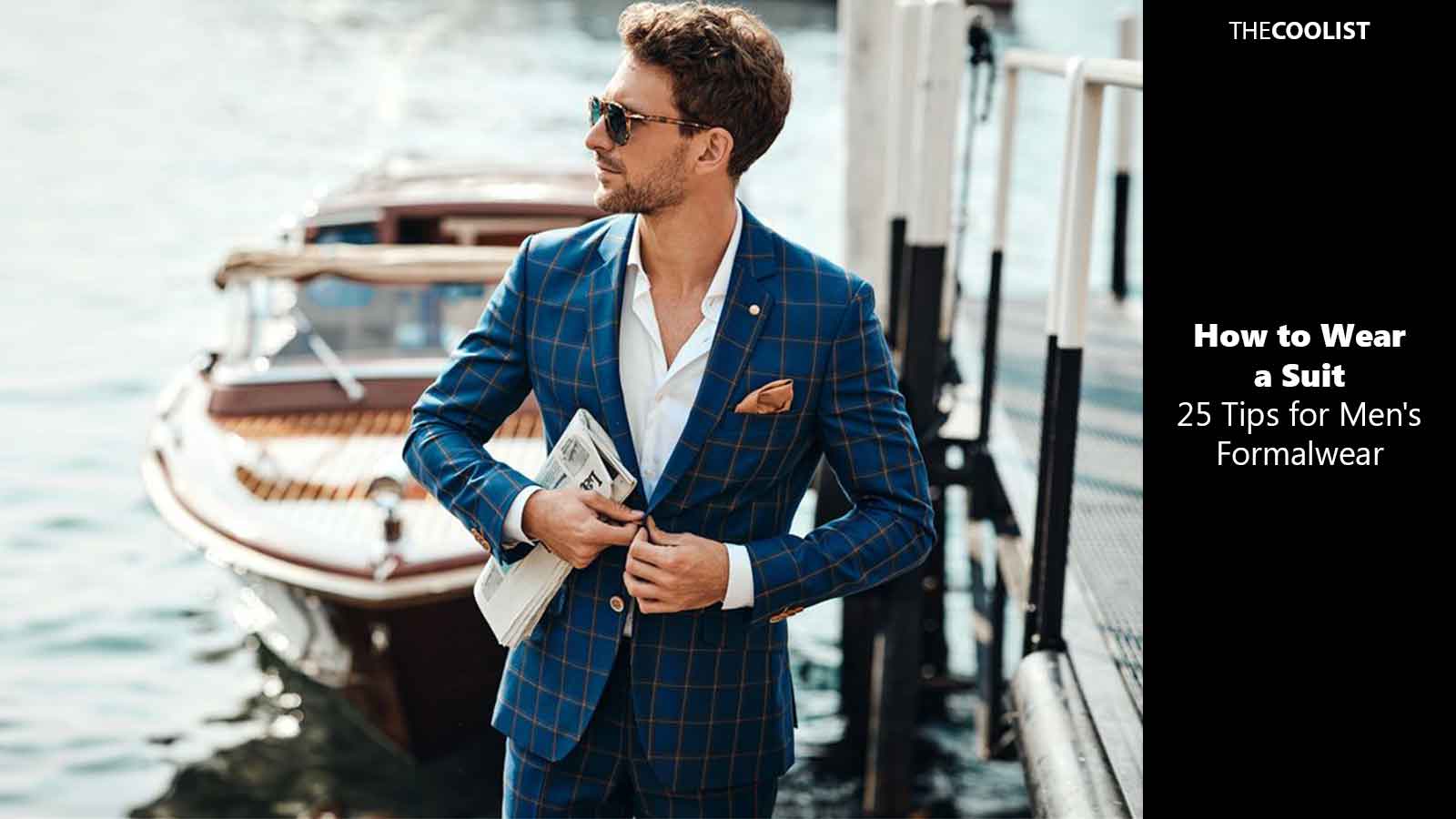
Having a suit you don’t know how to wear properly is almost as bad as having no suit at all. Imagine if someone arrived on a construction site and they had tools but had no idea what any of them did. That person would quickly get shuffled to the bottom rung on the ladder if they were kept on the ladder at all.
If you want to dress the part, then you need to understand the part you’re playing. Once you go down the suit-wearing route you will quickly learn there are a great many different suit styles and ways to wear a suit correctly. One suit jacket is not the same as another, and depending on the situation and the mood, very specific suits will be needed. It can be a long road to fully master the art of the suit, but it’s worth doing. The suit makes the man, after all.
However, we’ve got you covered. The following 25 tips cover the base points of suit etiquette and help you understand why you’re buying or selecting certain items from your wardrobe. Once you are familiar with the rules, you can, of course, play around with bending them in the name of personal style and flair. For now, though, stick to these tried-and-true menswear guidelines and you will never go wrong.
1. Tailor your suit
Fewer and fewer people go to a tailor these days, and it shows. The difference between an off-the-rack suit and a tailored one is like night and day. Get the sleeves and pants hemmed by a tailor, and let them guide you along. These are professionals who will make you look better than you ever have in your life. The art of tailoring is not just about fitting a suit; it’s about sculpting it to your body’s unique contours, ensuring each line and seam accentuates your best features.
View in gallery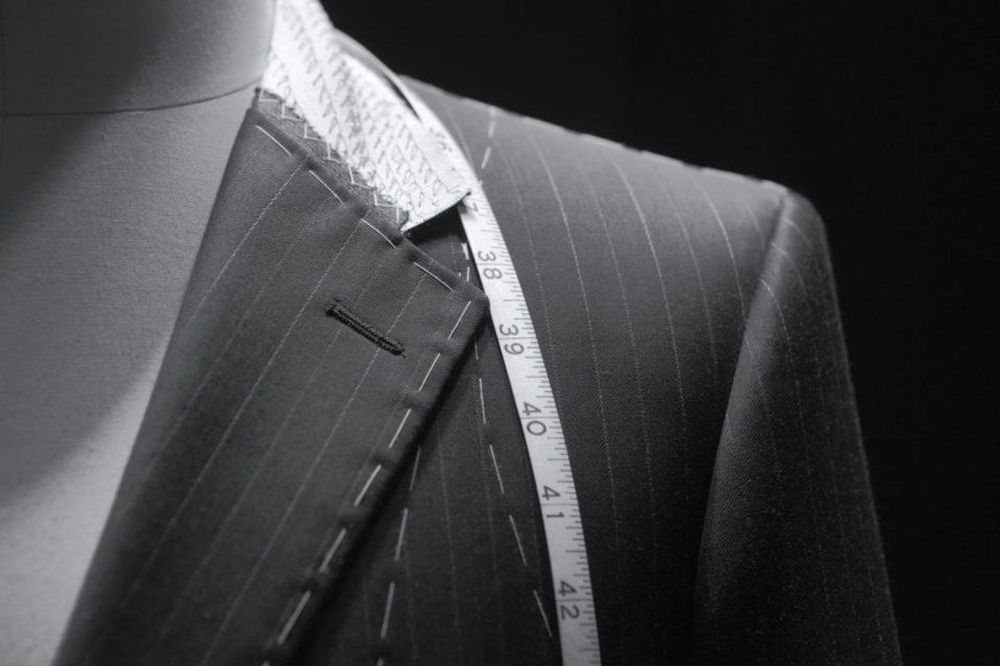
Find a good tailor, trust them, and they’ll take you far. A skilled tailor can transform an average suit into a masterpiece of style and sophistication. They know the tricks to make any fabric drape just right, how to adjust for those little asymmetries everyone has but no one talks about.
If anything, having a tailor is more important than the quality of your suit. A well-tailored mid-range suit can easily outshine a poorly fitted luxury one. Of course, if you have the funds, an expensive suit will always look better. However, if funds are tight, save on the suit and splash on the tailor. They are wizards with fabric, and at the end of the day, nothing beats a tailored suit. It’s an investment in your image, your confidence, and the way you present yourself to the world. Remember, when you wear a suit that’s been tailored to your body, you’re not just wearing a piece of clothing—you’re wearing a statement.
2. Check the silhouette of your shoulder pads
Fewer suits these days are coming outfitted with shoulder pads, but if you have a suit jacket with pads, then it’s crucial to ensure they sit just right. Shoulder pads should end precisely at the end of your shoulders, not beyond. The shoulder fit is paramount because it’s not just about comfort; it’s about structure and silhouette. A suit that fits well on the shoulders lays the foundation for the overall look.
View in gallery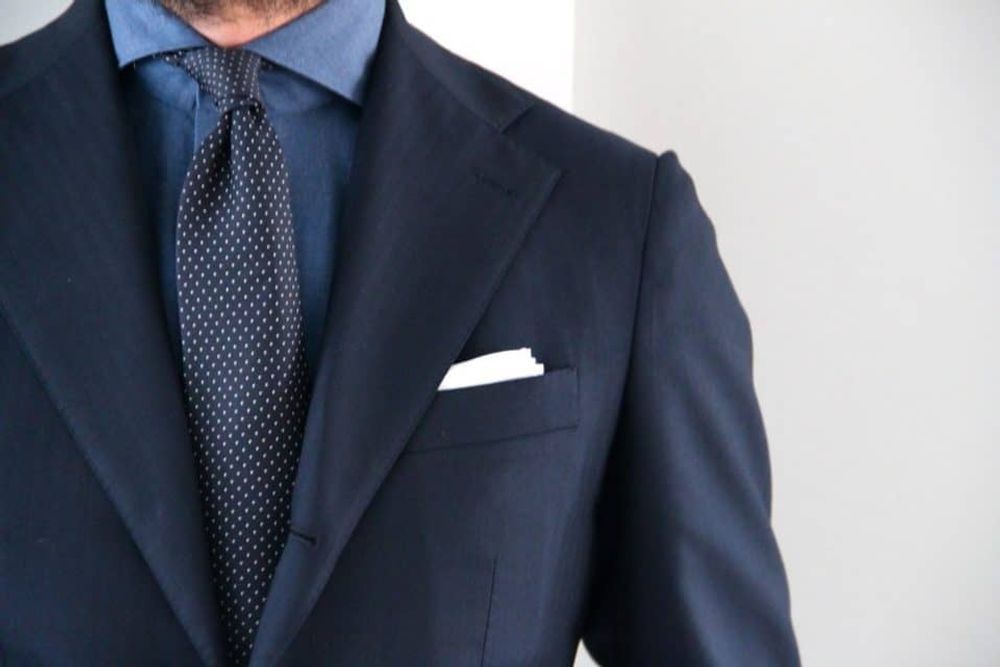
If the shoulder pads extend past your natural shoulder line, the jacket will look oversized, and the proportions of your entire outfit will be thrown off. Conversely, if the pads don’t reach the end of your shoulders, the jacket will appear too small, creating an equally unflattering look. This is where a good tailor comes back into play; they can adjust the shoulders to a perfect fit, ensuring the lines are clean and the form is exact.
Remember, a well-fitted shoulder on a suit jacket doesn’t just elevate your appearance; it boosts your presence in a room. It’s a subtle detail, but in the world of suit-wearing, subtleties make all the difference. When your suit jacket hugs your shoulders just right, you project an image of sharpness and sophistication, a man who knows and appreciates the intricacies of a well-crafted suit.
3. Match the tie to the lapel
Your tie and lapel should be about the same width. It might seem like a minor detail, but overlooking this can lead to a major fashion faux pas. When the widths are in harmony, they complement each other, creating a look that is cohesive and well thought out. However, when one is too thin or the other too fat, the end result can be jarring, akin to clashing colors: out of place and noticeably off.
View in gallery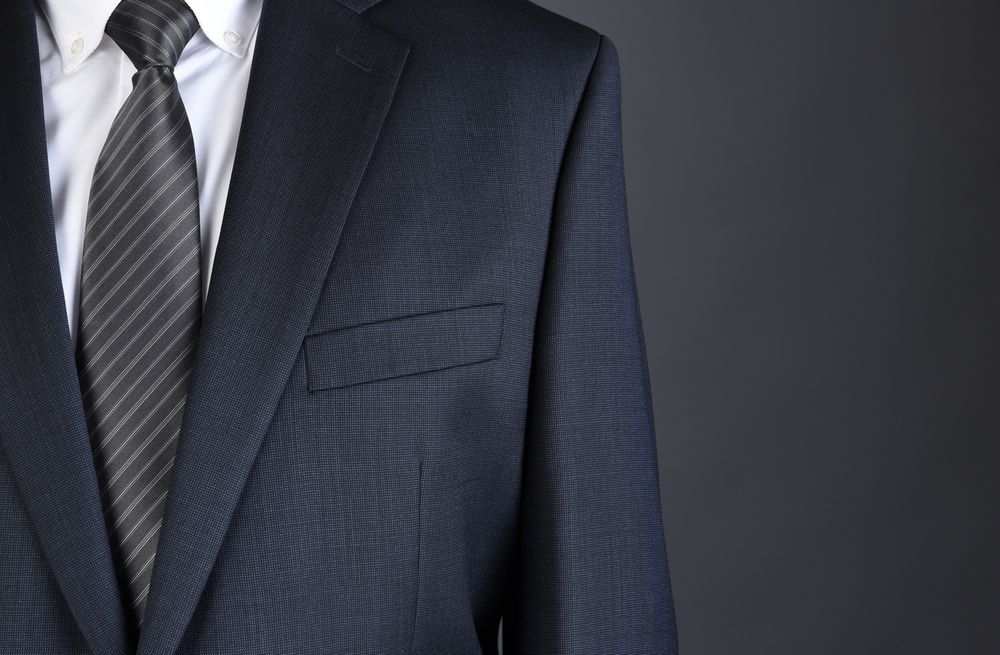
This balance is not just about aesthetics; it’s about proportion. The right proportions can enhance your figure, making you appear taller, leaner, and more put-together. It’s a subtle art, but one that makes a significant difference in the overall impression you make.
Also, don’t forget about the length of your tie. The ideal length is for the tip to just graze the top of your belt buckle or waistband. Anything shorter can make you look disproportionate, while anything longer can seem sloppy. This detail might seem small, but in the world of menswear, precision is everything. A tie that’s just the right length is the finishing touch that says you’re a man who pays attention to the finer details, a man who takes his appearance seriously. In the boardroom or at a social event, these nuances in your attire can speak volumes about your character and style.
Recommendation: The Percival Shoryu Tie for a pop of color
View in gallery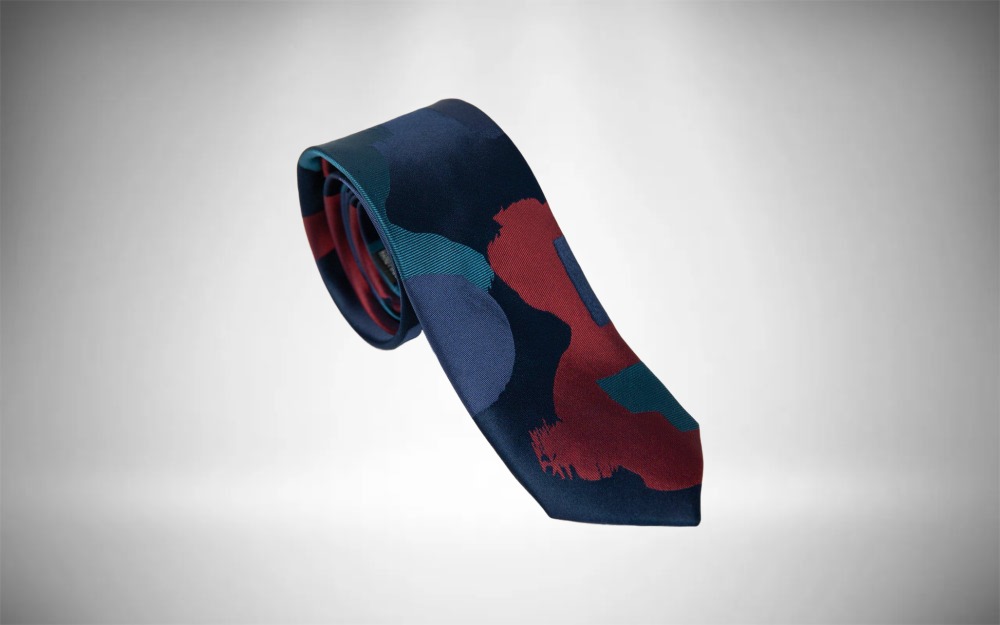
Shop Now
The Percival Shoryu Tie is a fine example for those times when you want to add an extra something to your suit, wear a patterned tie. he company created the Shoryu Tie out of 100% silk, suitable for being worn for casual or smart occasions. Percival wanted the Shoryu Tie to elevate all men’s suits with its abstract shapes and colors.
4. Experiment with a pocket square
The pocket square is a widely misunderstood part of any suit. Many say they should not be worn too frequently. However, that is an outdated concept. The modern suit-wearing man can use a square to great effect for almost any occasion. It’s not just an accessory; it’s a statement piece, a subtle nod to classic style mixed with contemporary flair. While it’s true you might not want to wear one every time you don a dress shirt and suit jacket, the simple fact is, you could if you wanted.
View in gallery
A pocket square adds a layer of sophistication and can be the perfect way to make a suit look more formal, or perhaps bring a little festive or seasonal cheer. It’s a versatile tool in your style arsenal. It can also be used to offset the lack of a tie for those more relaxed gatherings. In such cases, it acts as a focal point, drawing attention and demonstrating that you’ve considered your outfit down to the smallest detail. Remember, the key to a successful pocket square is in the coordination – not necessarily matching, but complementing the colors and patterns of your suit and tie.
And let’s talk about the fold. Whether you opt for a classic presidential fold, a more flamboyant puff, or a nuanced three-point fold, each style carries its own message and degree of formality. Experiment with different folds to find the one that best expresses your personality and the tone of the event.
5. Go easy on the bling
Big cufflinks, a tie pin, a tie clip, a flashy pocket square, a loud tie, and a bold print can indeed make a statement, but it’s crucial to wield these accessories with a discerning eye. For the suit novices, it’s vital to first grasp the fundamentals of suit wearing. Mastering the basics allows you to later experiment with these flamboyant elements confidently without overstepping into garishness. Remember, in the world of suits, less is usually more.
View in gallery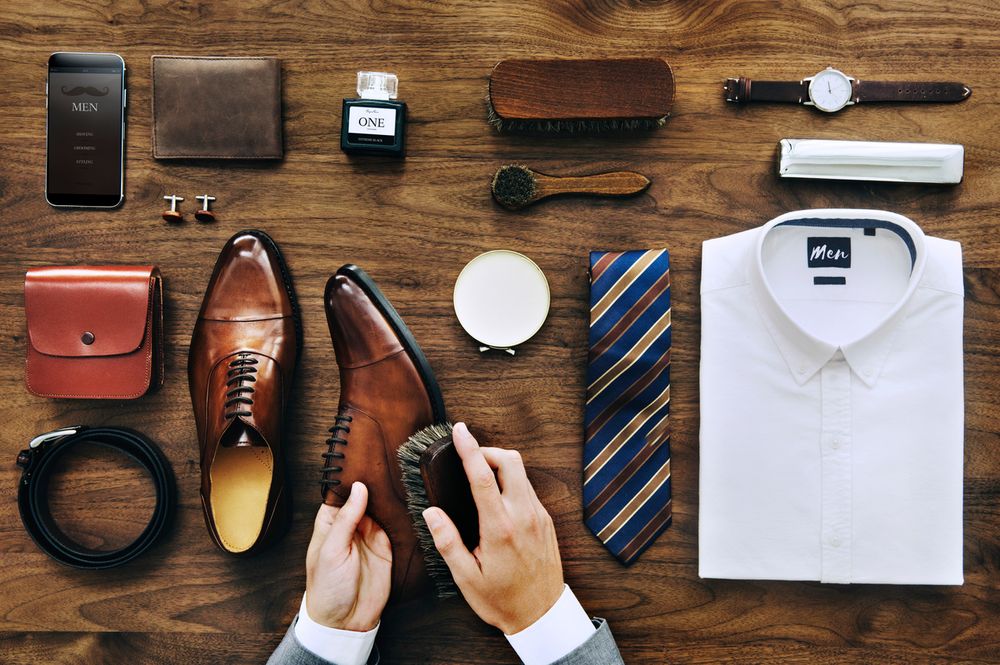
Select one or two statement pieces as focal points rather than crowding your look with multiple eye-catching accessories. A single, well-chosen piece of bling, like an elegantly designed tie clip or a tastefully bold pocket square, can elevate your suit from simple to sophisticated without overpowering the ensemble.
Finally, consider the occasion. What works for a high-fashion event might not suit a business meeting. In professional or formal settings, subtlety reigns supreme. Go for minimal and classic choices that add a touch of personality while maintaining the overall elegance of your suit. As your confidence in suit styling grows, so too will your ability to mix and match accessories, striking the perfect balance between understated and daring.
6. Avoid wearing black
We’re not saying to never, ever buy a black suit, but it’s a common misconception that black is the ultimate solution for all suit needs. In reality, a gray suit often proves more versatile in a wider variety of settings and occasions. Black suits, while classic, can be too formal or somber for everyday wear. Think beyond the traditional; there’s a world of colors out there that can offer more personality and flexibility. Navy, charcoal, and even subtle patterns or lighter shades can be more adaptable and less stark than black for your day-to-day suit needs.
View in gallery
That said, a black suit does have its moment in the spotlight. It’s perfect for highly formal events, like black-tie gatherings, where its elegance and simplicity shine.
Understanding when and how to wear a black suit is part of developing a sophisticated style sense. It’s not about shunning black entirely, but about recognizing the versatility and appropriateness of other colors. Expand your wardrobe palette, and you’ll find yourself prepared for a broader range of events and settings, each with a suit that perfectly matches the tone. Remember, in the world of fashion, knowledge and choice are your greatest allies.
7. Always wear a belt or suspenders
The only excuse for not wearing a belt with a suit is if you’ve opted for suspenders (and you should never wear both). Aside from that, skipping a belt can leave your suit looking unfinished, like a painting without a frame. The belt is more than just functional; it’s a crucial element that ties your entire outfit together. It’s the bridge between your upper and lower half, providing a smooth transition that enhances the overall cohesion and elegance of your suit.
View in gallery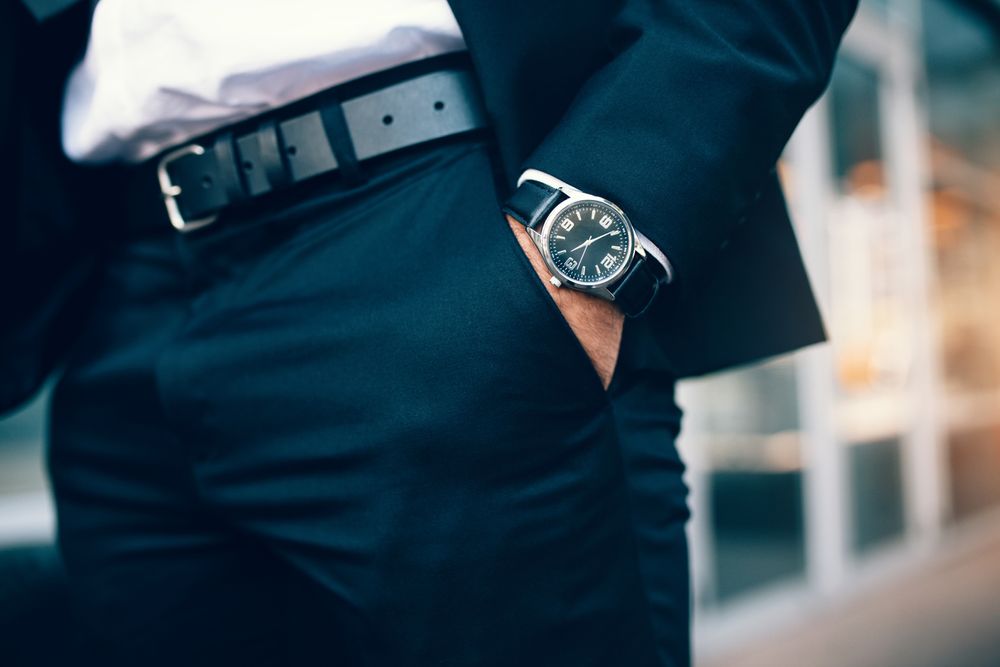
When selecting a belt, coordination is key. It should match not only the color of your shoes but also complement any other accessories you’re wearing. Remember, the devil is in the details, and a well-matched belt can be the subtle difference that elevates your look from good to great.
Lastly, steer clear of novelty belt buckles. They can detract from the sophistication of your suit. Opt for a classic, understated buckle that aligns with the formality and style of your attire. A tasteful belt buckle serves as a subtle nod to your attention to detail and understanding of the nuanced art of suit wearing.
8. Go for a double vented suit
The double vented suit is the epitome of modern style and sophistication. It offers a sleek and refined appearance that works well with a wider range of body types compared to its single-vented counterpart. This isn’t just about following a trend; it’s about embracing a design that enhances your suit’s overall look and feel.
View in gallery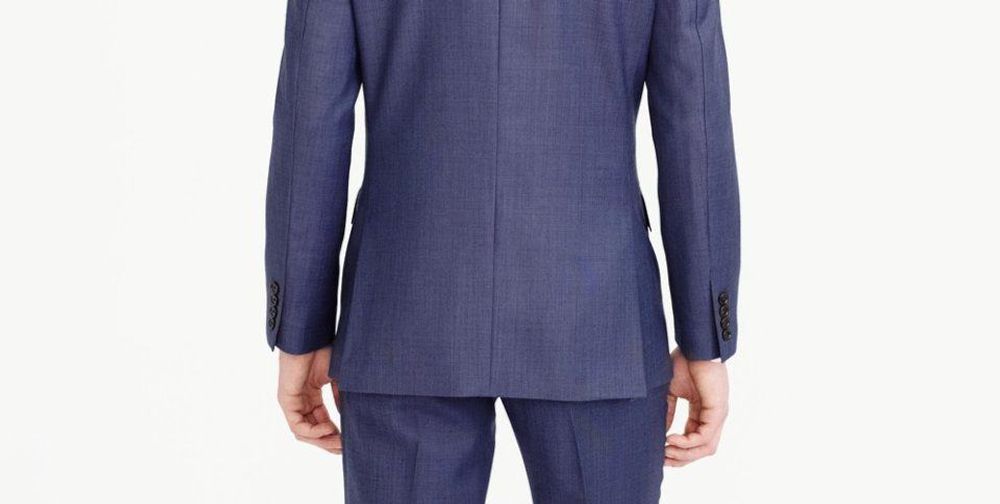
The way a double vented suit falls and moves with your body contributes significantly to its appeal. It creates a silhouette that is both flattering and comfortable, allowing the suit to drape naturally over the contours of your body. This feature is particularly advantageous when you’re sitting down, as the vents prevent the suit from bunching up and maintain its clean lines.
9. Never button the bottom button
In the realm of suit jackets, buttoning only the top button (or the top two in a three-button style) is a hard and fast rule. Buttoning up offers a clean, structured look that’s both professional and aesthetically pleasing. Buttoning the entire jacket, however, is a serious misstep. It disrupts the jacket’s natural line and can make you appear stiff or overly formal, as if you’re trying too hard to make an impression. And a cardinal rule to remember: never button the bottom button alone. This isn’t just a style tip; it’s a cornerstone of classic menswear etiquette.
View in gallery
The rationale behind this guideline goes beyond mere tradition. It’s about the cut and fit of the suit. Designers craft these jackets with the intention that only the top buttons will be used, allowing the garment to fall and move with the body in a way that’s both comfortable and flattering. Leaving the bottom button undone also provides more ease of movement, particularly when sitting, ensuring the fabric drapes smoothly without bunching. By adhering to this simple yet crucial rule, you not only show respect for the craftsmanship of your suit but also demonstrate an understanding of timeless style.
10. Unbutton before sitting
Navigating the world of suits, especially for newcomers, often includes learning the subtleties of how to wear them correctly. One key aspect is knowing how to wear your suit when sitting down. It might seem intuitive to maintain the same buttoned-up look throughout the day for consistency, but there’s a different rule for sitting. In more relaxed settings, you might have the option to slip off your jacket, but in many situations, especially in formal or professional environments, the preferable choice is to simply unbutton your suit jacket.
View in gallery
When you remain seated with your jacket on, it’s essential to unbutton it completely. This isn’t just a matter of comfort; it’s about preserving the integrity of your suit and maintaining a polished appearance. Keeping your jacket buttoned while sitting can strain the fabric, potentially damaging the suit and ruining its fit. It can also lead to awkward bunching and creasing, which detracts from the sleek look you’re aiming for. Not to mention, it puts unnecessary stress on the buttons, risking one popping off at an inopportune moment. Once you stand, remember to rebutton your jacket to restore your composed, tailored appearance. This simple gesture is a sign of sartorial savvy, reflecting a discerning understanding of how a suit should be worn.
11. Display a half-inch cuff
This guideline, while straightforward, often trips up many in the suit-wearing world. The perfect suit appearance requires that your shirt cuff extends approximately half an inch beyond your jacket cuff. This subtle peek of shirt cuff is not just a matter of preference but a hallmark of a well-fitted suit. If the shirt cuff extends too much, it can give the impression of a mismatched suit and shirt, while too little cuff display suggests that either the shirt sleeves are too short or the jacket sleeves are too long. The balance is key: half an inch is just enough to show attention to detail without overshadowing the suit itself.
View in gallery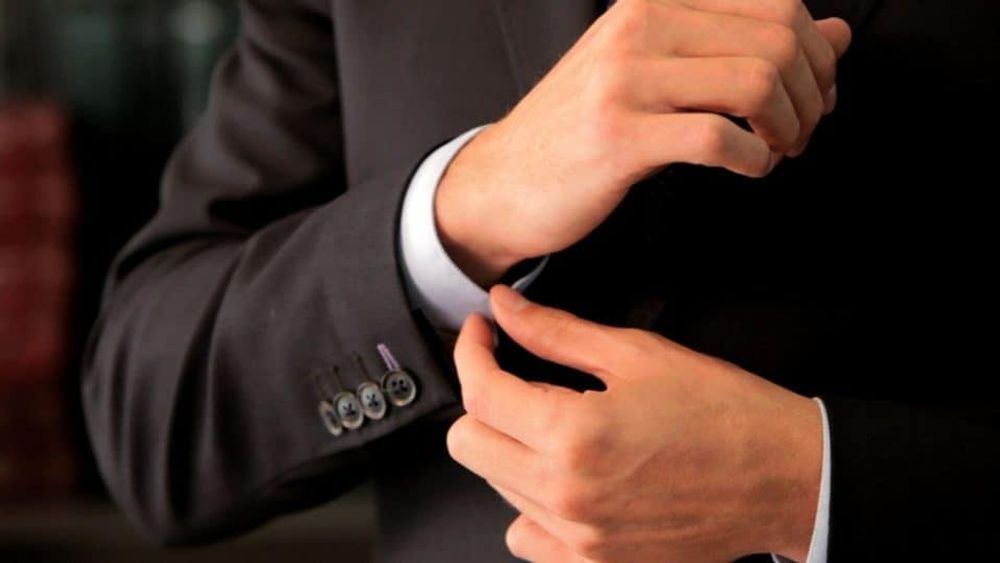
Moreover, the length of your shirt cuff should end right at the hinge of your wrist, allowing it to show under your jacket sleeve without dominating the look. Cuffs that are too long and flow over your hands or too short exposing your wrists disrupt the harmony of your outfit. These nuances in the fit and length of your shirt and jacket sleeves speak volumes about your understanding of style. Ensuring that these elements are precisely aligned can elevate your overall appearance from merely dressed up to impeccably tailored and polished.
12. Add a vest for formality
Vests don’t just add a layer of formality; they infuse your ensemble with a sense of deliberate style. Wearing a vest demonstrates a thoughtful approach to dressing, as it shows you’ve gone the extra mile beyond the standard two-piece suit. This added layer enhances the suit’s appearance, making it look more complete and meticulously put together. On practical terms, a vest provides additional warmth, a definite plus on colder days.
View in gallery
Moreover, vests offer versatility in your wardrobe. Pairing a suit with a vest, even without a tie, can strike a fine balance between playful and professional. It gives off an air of casual elegance, creating a look that’s sophisticated yet approachable. This can be particularly effective in settings where you want to appear well-dressed but not overly formal. This broad utility has seen vests enjoying a resurgence in the modern fashion world.
13. Understand the lengths of your suit
Knowing the lengths of different elements in your suit ensemble are crucial to achieving a polished look. Your tie should just graze the top of your belt, creating a neat, uninterrupted line down the front of your suit. This rule applies equally to vests or waistcoats, ensuring a harmonious balance in your attire. As for your suit jacket, it should be long enough to cover your zipper and extend slightly over your rear, offering a clean and tailored silhouette. This length is key to maintaining a dignified and professional appearance.
View in gallery
Pants, too, have their own length rule. They should ideally rest lightly on the top of your shoes, exhibiting a slight break. This slight crease in the fabric where your pants meet your shoes adds a touch of sophistication. As for socks, they should be long enough to bridge the gap between your pants and shoes seamlessly, ensuring no skin is visible when you sit or move. The goal is to create an unbroken line of fabric from your waist down to your shoes, projecting a cohesive and well-thought-out look. Remember, in the world of suiting, precision in these length details can make the difference between looking just dressed and impeccably attired.
14. Spare a thought for socks
Socks are often an afterthought, but they actually offer a unique opportunity for personal expression within the traditional boundaries of formal wear. Whether they’re boldly patterned, brightly colored, or subtly textured, your socks can add an unexpected twist to your outfit. The key is to ensure they’re appropriately matched and sufficiently long. Socks should always cover your ankles completely, preventing any skin from being exposed when you move or sit.
View in gallery
There’s plenty of room to play with color and pattern in your sock choices, but there are limits. Steer clear of plain black or white socks, as they can come across as too mundane or informal for a suit. Instead, opt for hues and patterns that either coordinate with your attire or provide a tasteful contrast. Remember, while socks are a small detail, they can speak volumes about your style and attention to detail. In the nuanced world of suit styling, even the smallest elements count, and a well-chosen pair of socks can elevate your overall look from standard to standout.
15. Wear an undershirt
The value of a good quality undershirt when donning a suit is not just about layering; it’s about comfort, appearance, and protecting your suit. A standard white t-shirt won’t suffice; you need an undershirt specifically designed for providing a base for your formal wear. A proper undershirt will sit snugly against your body, absorbing sweat and preventing any potential stains or odors from reaching your dress shirt and suit.
View in gallery
Crucially, the undershirt should remain invisible under your dress shirt. If its collar peeks out, especially when wearing a tie, it detracts from the sleekness of your attire. To avoid this, opt for an undershirt with a deep V-neck or an A-style that stays hidden, even with the top button of your shirt undone. Remember, the undershirt is the foundation of your outfit, and while it’s not seen, its impact is felt.
16. Cut the basting stitches
When you first get your hands on a new suit, you’ll notice it comes with various strings and tags that are not meant to be part of your final look. These “basting stitches” are there to keep pockets closed, hold vents in place, and display brand tags during shipping and display. One of the first steps in making a suit truly yours is to carefully remove these stitches. It’s a rite of passage for every suit wearer, and essential to ensure your suit looks ready to wear and not just off the rack.
View in gallery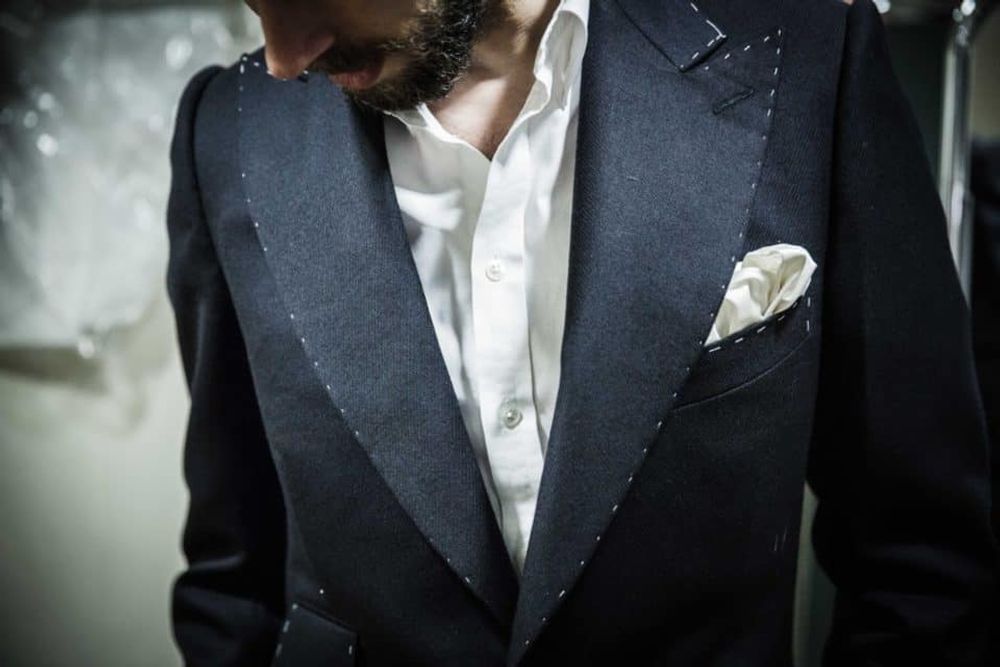
We’ve all been there, stepping out with a tag still attached or vents sewn shut. It’s almost a necessary mistake in the learning curve of suit-wearing. However, once you’ve made this error, you’re unlikely to repeat it. So, take the time to inspect your suit and snip off those remnants of its retail journey, and step out with the confidence of a well-dressed, experienced suit connoisseur.
17. Avoid pleats
The allure of pleated suit trousers might seem like a direct route to that sharp-dressed vintage look, but tread carefully. While they have their place in certain styles, pleats often have the unintended effect of making the wearer appear bulkier and shorter than they actually are. This is due to the way pleats add extra fabric and volume around the waist and hips, which can disrupt the sleek lines we aim for in modern suiting. So, unless you’re specifically going for a retro, 1950s father-figure aesthetic, it’s wise to stick to flat-front pants.
View in gallery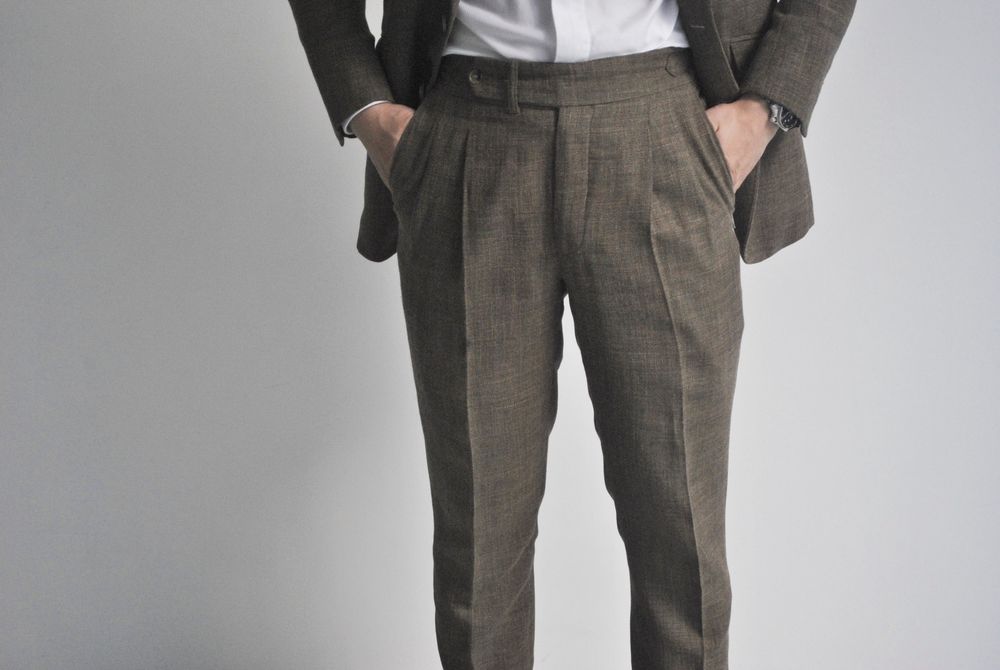
Flat-front trousers, in contract, offer a cleaner, more contemporary silhouette that complements a variety of body types. They help in creating a streamlined look that elongates the legs and slims the waist, which is often the goal in modern menswear. This style aligns better with today’s fashion sensibilities, where the emphasis is on a fit that’s tailored yet comfortable, without unnecessary embellishments. Remember, when it comes to suits, simplicity speaks volumes.
18. Go for subtle prints
Pinstripe suits aren’t the be-all and end-all of patterned elegance. Sure, you need more than just the solid colors in your arsenal, but don’t just immediately shoot for stripes. There’s a world of prints out there that can elevate your style without screaming for attention. Try on some windowpane, houndstooth, or glen plaid. These patterns have a knack for making you stand out just enough — they’re classy, not flashy. They say you know your way around a wardrobe without trying too hard to prove it.
View in gallery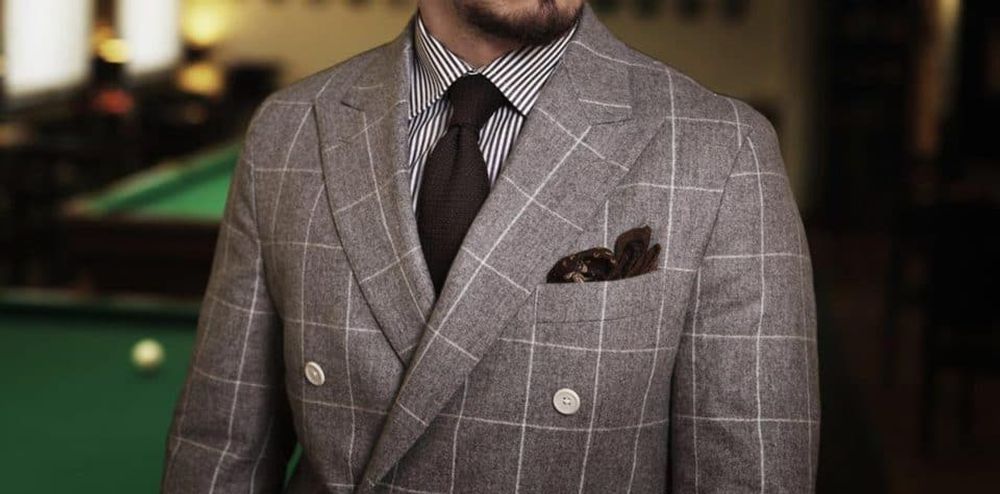
These subtler prints bring an air of sophistication and a touch of personality that solid colors just can’t match. They’re like a secret handshake in the world of suiting; they show you know the game and you’re playing it with a bit of flair. But remember, the trick is in the balance — bold enough to be noticed, yet restrained enough not to overpower. A suit with one of these patterns is like a jazz riff in a world of elevator music — it’s about making a statement that’s cool, collected, and subtly confident.
19. Be careful with French cuffs
French cuffs do indeed add a touch of class to your outfit, but there’s a fine line to tread. They should be the epitome of subtlety, an understated nod to sartorial elegance rather than a loud fashion statement. If your French cuffs are waving around like flags or flopping over your hands, you’ve missed the mark. They should be just firm enough to hold their shape and give that crisp, polished look. Think of them as the finishing touch on a well-thought-out ensemble: noticeable but never overpowering.
View in gallery
Make sure your French cuffs are neatly fastened with cufflinks that complement, rather than overpower, your outfit. The cufflinks themselves are an opportunity to express a bit of personal style – whether you go classic with subtle metals and designs or add a touch of personality with something more unique. Remember, French cuffs are about refinement; they should add a polished touch to your suit without becoming the main focus.
20. Cover your collar
Your shirt collar should disappear under the lapels of your suit jacket, otherwise, it doesn’t look like an ensemble. When your collar sticks out, it disrupts the flow of your ensemble, making it seem like your pieces are competing rather than complementing each other. The points and corners of your collar should be discreetly tucked away, contributing to a clean, unified look.
21. Wear trousers that fit
Navigating the treacherous waters of trouser length without a tailor is like trying to bake a soufflé without a recipe – possible, but risky. The golden rule here is to get the right length. Pants that are too long will have you looking like you’re wearing hand-me-downs. Those that are too short might send the message that you’re still waiting for the rest of your trousers to arrive. It’s a delicate balance, one that requires a little more effort than just clicking ‘add to cart’ online.
View in gallery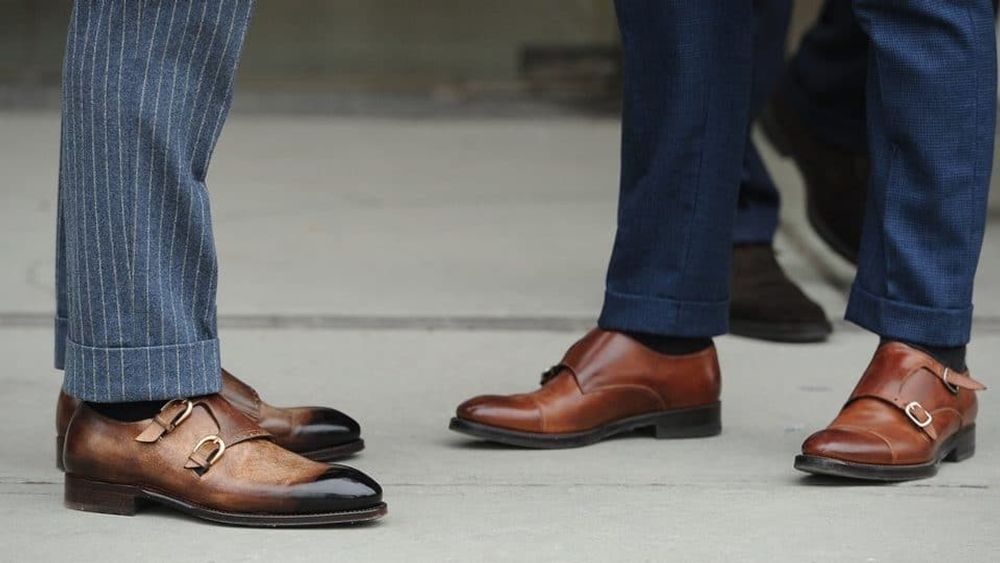
This predicament is exactly why the brick-and-mortar clothing store hasn’t gone the way of the dinosaurs. Trying on pants in-store is about as essential as remembering to put them on in the morning. Sure, you might not be growing taller (more’s the pity), but let’s face it – trousers come in as many lengths as there are fish in the sea. And in this case, you really need to catch the right one. So, take the time to try before you buy. It’s a small step for you, but one giant leap for your wardrobe’s sake.
22. Know your shoe colors
Navigating the world of shoe colors with your suits doesn’t require a degree in fashion, but it does call for a bit of common sense. Black shoes with a black suit? Classic. Brown shoes with a brown suit? Timeless. But mixing black shoes with a brown suit, or vice versa, is like putting ketchup on pasta – possible, but bound to raise a few eyebrows. It’s not that you can’t ever mix them; it’s more like playing fashion on hard mode. For now, let’s stick to the basics. Keeping your shoes and suit in the same color family is a safe bet and ensures you look coordinated, not confused.
View in gallery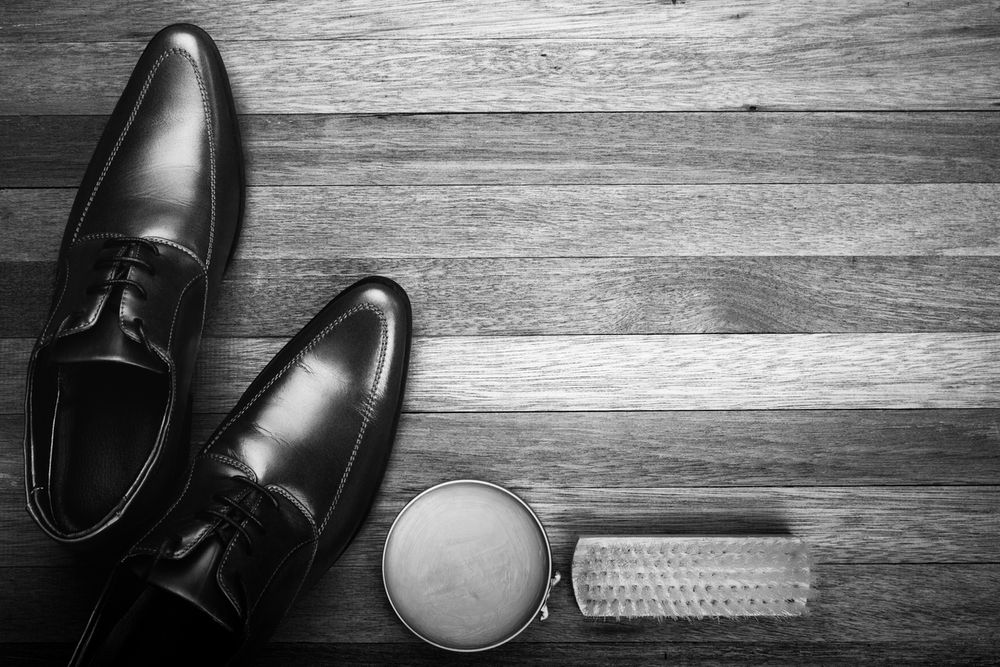
As you get more comfortable in your suit-wearing journey, feel free to flirt with the idea of color experimentation. Maybe venture into navy suits with brown shoes, or grey suits with black shoes it’s like adding a bit of spice to an already great dish. But remember, the key here is confidence. You have to own the look. So, start with the fundamentals, build your style confidence, and then test the waters with intent.
23. Keep the knot simple
Tie knots and rocket science share one thing in common: they both can get unnecessarily complicated. But when it comes to suiting up, it’s best to leave the fancy stuff to the astronauts. Keep it simple with a classic Windsor knot or its big brother, the double-Windsor. These knots are like the vanilla ice cream of the tie world – simple, reliable, and always in good taste. Dabbling in more elaborate knots might seem tempting, but in the professional world, they can send a message of trying too hard.
View in gallery
It’s all about mastering the basics before getting creative. There’s a whole universe of tie knots out there, each with its own flair and degree of difficulty, but none hold a candle to the polished appearance of a well-tied Windsor. It’s the knot that says, “I’ve got this,” without saying anything at all. So, before you venture into the wild world of trinity knots or Eldredge knots, make sure you’ve got the Windsor down pat.
24. Cover your tie
Your tie peeking out from under your shirt collar is like socks with sandals: it just doesn’t work. The only place your tie should be visible is in the front, the part that’s meant to shine. If it’s sneaking out from under your collar elsewhere, it’s a fashion faux pas that screams, “I’m new here!” This could mean your tie is playing dress-up in a size too big, or your shirt is playing it small. Either way, it’s a mismatch that needs addressing. Remember, in the world of suits, harmony is key.
View in gallery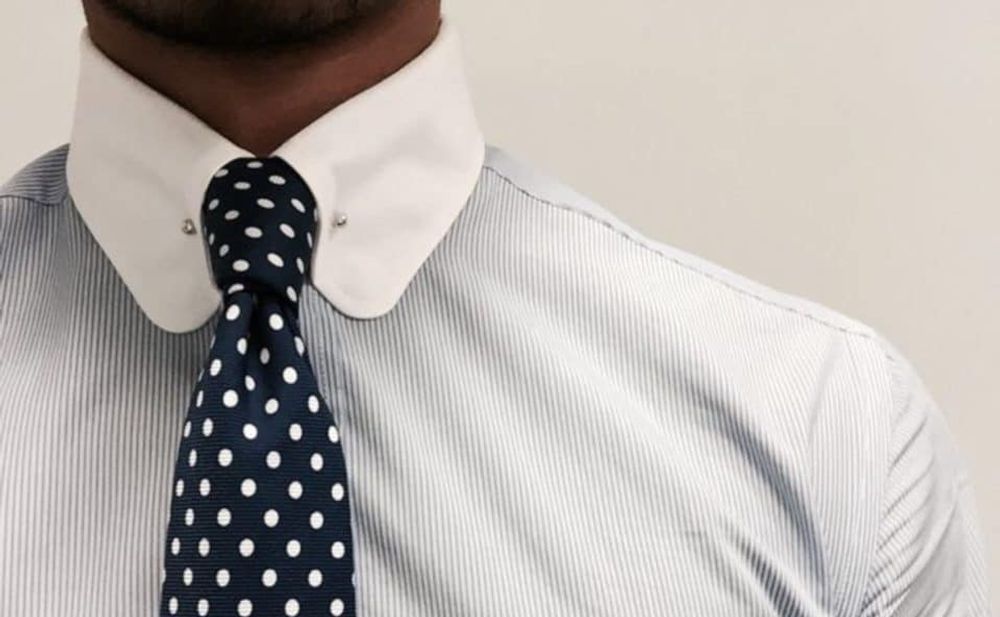
Ties are your chance to inject a bit of personality into your ensemble. Feel free to get creative with colors and patterns, to let your tie tell a story about who you are. But (and this is a big ‘but’) never at the expense of the golden rule of tie-wearing: keep it tucked neatly under your collar, except where it’s supposed to show. Think of it like seasoning a dish – the right amount enhances the flavor, but overdo it, and you’ve ruined the dish.
25. Don’t neglect personal grooming
Let’s face it, the sharpest suit in the world can’t save a day that’s gone awry in the grooming department. It’s like having a fancy sports car with a flat tire – it just doesn’t work. Personal grooming is the unsung hero in the world of suits. A crisp suit paired with a well-kempt appearance is the dynamic duo of the style world. This means hair that looks like it’s met a comb more than once in its lifetime, a beard that’s more neat than neglected, and nails that don’t look like they’ve been used for digging trenches.
View in gallery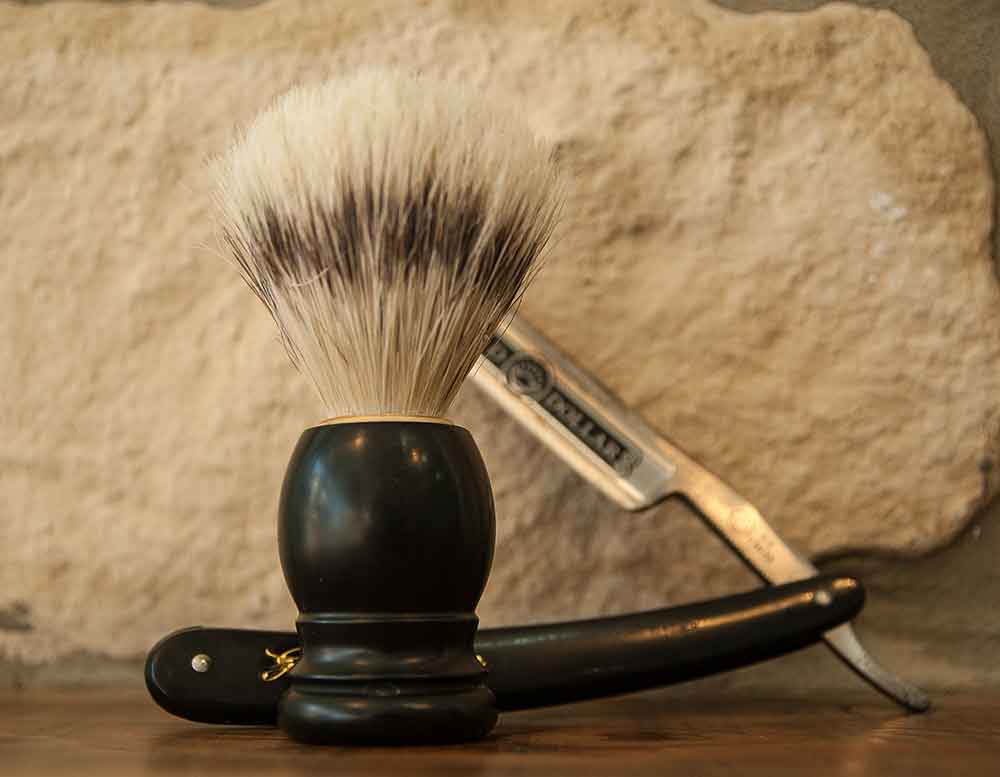
And let’s not forget about the scent – it’s the invisible finishing touch. A good cologne can be the subtle nod that says, “Yes, I take this suit-wearing business seriously.” But remember, cologne should make its presence known without being too obvious. In the end, grooming is about those final tweaks that turn “just dressed” into “meticulously put-together.”
Conclusion: Suiting up is about more than clothing
Wearing a suit is more than just a fashion statement; it’s an art form. It’s about expressing who you are and who you aspire to be. Each element, whether it’s the subtle print of your fabric or the careful grooming that complements your look, contributes to a larger picture – your personal and professional identity.
As you master each suit-wearing tip, remember that confidence is your greatest accessory. A suit, no matter how well-tailored, is only as good as the confidence of the person wearing it. Embrace your choices, learn from your style experiments, and wear each suit as if it was made just for you. And while trends may come and go, the principles of good taste, fit, and appropriateness remain timeless. Keep evolving your style, stay true to your unique flair, and above all, enjoy the process. After all, each time you suit up, you’re not just dressing for the day; you’re crafting a legacy of elegance and class.






